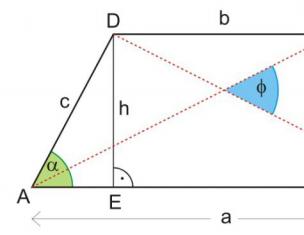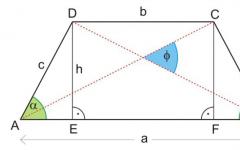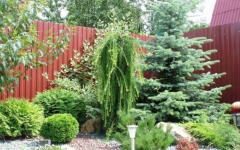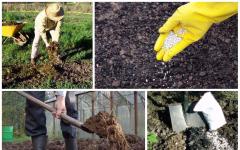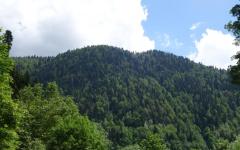Architectural solutions reflect the concept of a building object and contain data on the visual and functional characteristics, planning and spatial organization of the building. Chapter "AR" is a priority stage and an obligatory component of the project of any building object. Development architectural solutions is a complex multi-stage process that determines the compliance of building parameters with existing state legislative acts and socio-economic, sanitary-hygienic, environmental, fire regulations.
The old ceilings were then replaced with new wood and concrete floors. For this, thousands of screws were applied by hand. For engineer Klaus Heidenberger, who is responsible for the structural calculations, repairing the roof was a very difficult task. The builders paid close attention to the preservation of the ancient wooden beams. To meet modern static requirements, a second steel Basic structure. In this particular case important role yard logistics played. It was not possible to work through the crane due to the already existing roof and the house was also inhabited in the lower planes.
Making informed architectural and planning decisions is the key to successful and high-quality project development. PNProject specialists find the optimal ratio of structural, functional and aesthetic parameters of the building, taking into account economic aspects. The architectural solution of the object is the "foundation" of the project, the basis for the development of other sections of the project documentation. Reliability, durability and other important characteristics of a construction object depend on the quality and professionalism of the implementation of the “AR” section.
It was important for us to create a clear contrast between the existing building and the adjacent building. During the design process, the position was an important criterion for us. Here, at the door of the Dolomites nestled in the mountains, the crystalline form is evident. At various design stages, during which the builders were directly involved, a proposal was created. It is also the result of a space game between house and barn. It would be black, it was clear from the start. The facade of transparent plaster deserves a certain contrast.
This important organ, isn't it a tear with the past? The last major changes were made about 100 years ago. For example, a verandah has been added to the south. Previously, there was only bukkani. Many generations of the family have worked in this building. Even today's generation has added a touch to the building without falsifying its character. The decor impresses with many small details.
Text part. The explanatory note provides a description appearance and the interior of the building, justifies the choice reflected in the graphic part of the decisions on planning, functional organization and spatial composition of the building. If necessary, the decisions made are confirmed by calculations. The text part also provides a rationale for the compliance of the architecture with the current labor protection standards, environment, fire safety. The compositional techniques that were used in the development of the interior and exterior of the building are described in detail.
We had a wide range of existing furniture. Together with ours. collaborator Ingrid Tosoni and builders, we thought about additional furniture for different rooms. They should be simple so as not to give too much character. With the peculiarity of each room, many solutions have arisen. Thanks to the various works of the artist Ingrid Kanins, additional lighting was created in the interior architecture. For example, one of the rooms was completely furnished with it and so again there is a difference with all the others.
To solve these problems, the owners did not pay the costs to bring a technically advanced design. An acoustic specialist was involved, who during construction works worked with us with his advice. In this way, we managed to build an ancient building with acoustic conformation above the rules of sound transmission. That's why every material used and every detail planned has been tested. Of course, all the implants were restored. Until the old stoves are dismantled and rebuilt with built-in heating elements one to one, like a puzzle in the places provided.
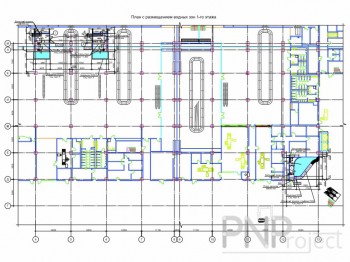 When designing non-industrial facilities (shopping and entertainment complexes, hotels, business centers), special attention is paid to decorative and artistic aspects. The premises of the following categories are considered separately: main, auxiliary, technical, for service personnel. Schemes of optimal natural light in places of constant residence of people. The explanatory note of the "AR" section contains data on measures aimed at protecting the premises from vibration, noise and other negative impacts.
When designing non-industrial facilities (shopping and entertainment complexes, hotels, business centers), special attention is paid to decorative and artistic aspects. The premises of the following categories are considered separately: main, auxiliary, technical, for service personnel. Schemes of optimal natural light in places of constant residence of people. The explanatory note of the "AR" section contains data on measures aimed at protecting the premises from vibration, noise and other negative impacts.
They now serve as radiators to circulate pleasant heat again. Internal insulation in the attic provides greater heat retention inside the building. Even the roof has been completely revised to better insulate the structure. How was the cooperation with the owners?
I admire the hosts for their patience and perseverance. Especially Katrin took care of all the details during the construction phase. Helmut was very involved in common work for planning. Finally, it was a collaboration. I am very happy and grateful for the opportunity to participate in the implementation of this project. Unfortunately, we rarely find owners who understand creative processes and who develop so much passion when developing a project.
The grafical part. Architectural solutions of buildings are displayed not only in text form, but also in the form of graphic documents. The composition of the drawings of the "AR" section is determined on an individual basis in accordance with the requirements of the terms of reference and the specifics of the building object. An integral part of the graphic part - floor plans buildings and explication of premises. Also, the "AR" section includes drawings that show the architectural features and color scheme of the facades. The maximum possible amount of information is presented in the form of axonometric diagrams and 3D models.
"The skin of architecture" is a key theme of the modern building. For this, the "outer shells" deserve special attention. They can be sober and functional, exciting and representative. In terms of proportions, materials, texture of finishes and variety of colors are the only buildings of its kind, the balance between play and quality influences the architectural culture. Thanks to many years of experience, we can name specialists in the field of aluminum ventilated facades.
The façade material is characterized by extraordinary features such as absolute flatness, a wide range of finishes and colors, and exceptional machinability. Unusual facades with high functionality. The implementation of the Raiffeisen Financial Center playfully complies with the necessary constraints imposed by building standards, as well as the requirements of the planning program, which is different for each floor, and allows the formation of a coating that easily surrounds its subsequent developments in this bank.
Stages of development of architectural solutions
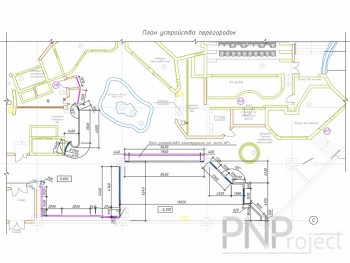
Preliminary design. At this stage, the general concept of the building is being developed without detailed elaboration of details. The conceptual proposal is agreed and approved by the customer and the investor. Based decisions taken preliminary technical and economic indicators are determined, according to which it is possible to predict the profitability of a commercial capital construction project with a minimum error. PNProject specialists create a concept using computer programs 3D visualization. A visual schematic representation of facades, floor plans, general view and other features of the architecture of the building allows you to identify all the shortcomings and eliminate them at the initial stage. The adopted conceptual solutions are accompanied by a brief explanatory note. After agreeing on the details draft design we start developing project documentation.
The continuity of the liner gives employees and customers a concept of identity, while the volumetric declination ensures that the building is featured prominently in the layout. The Uppsala Concert Hall and Congress Hall, located in the new part of the city, blends with its own identity in an elegant intertwining with the historical surroundings. The vertical gap inside the building is an entrance to the public from two sides: the historical and ancient city and the modern Vaksala Square.
The building develops around two angled inclined wings separated by an atrium of the same shape. The façade cladding consists of a sequence of 13 panels of various shapes. High visibility combines high reachability. This "modulation" of the structure allows the creation of dim corners for the main entrance and the entrance to the underground garage located in another structure of the building, which in turn is covered by a "landscape garden". High visibility, high building visibility makes optimal use of daylight, creating bright and airy spaces that are both soothing and relaxing.
Stage "Project" - approved part of the project. The graphic part of the "AR" section at the "Project" stage includes drawings of a general view and facades of the building, detailed floor plans, sections, schematic floor plans, specifications, an explanatory note. At this stage, fundamental issues are being resolved - technical and economic indicators are being specified, the compliance of the architectural features of the building with environmental, sanitary and hygienic, fire safety requirements is ensured.
During the implementation process, attention to the flow of passengers was a fundamental aspect, the result of which today is a clear and logical flow. Matisse, Picasso, Mitro, Pollock and Brancusi have already taken their place and can be admired in the new house. Inside the corner blocks of the Pompidou Center in Metz, which with their huge flat, flat windows seem to be crushed inside a hut, was used as an office. Borislav Mancheva, Lyuben Karavelov VFU.
Technology parks are supported by universities and local governments. They were created with the aim of achieving high-tech economic development and expanding knowledge. During their construction, it is desirable to minimize transport in favor of pedestrian access and green spaces. The architecture of these complexes should allow for flexible use of space as well as well-designed common areas. Collaborative research requires teams of scientists to form interdisciplinary research units.
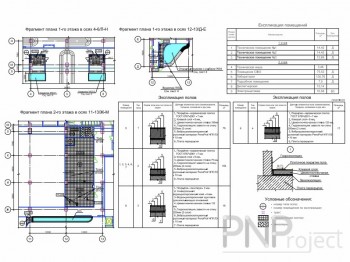 Decisions are made on the basis of the wishes of the customer and the amount of the budget allocated for construction. Also, the data of pre-project engineering surveys. Architectural solutions at the "Project" stage are sent for examination to the appropriate authorities. For our part, we guarantee a quick and unimpeded examination, as we take full responsibility for the quality of design solutions.
Decisions are made on the basis of the wishes of the customer and the amount of the budget allocated for construction. Also, the data of pre-project engineering surveys. Architectural solutions at the "Project" stage are sent for examination to the appropriate authorities. For our part, we guarantee a quick and unimpeded examination, as we take full responsibility for the quality of design solutions.
This report examines and analyzes examples of successful technoparks and project proposals for such a complex in the area of the industrial zone of Mirena, north of Sofia. A university research park, science park, or science and technology park is the physical expression of cooperation between universities, industry, and government to create high-tech economic development and knowledge expansion. Unlike a typical high-tech business district, these parks are more organized, planned, and purposefully managed.
Working documentation - sets of drawings for construction and installation works. In order to Building company was able to complete the work on the implementation of the architectural part of the project in full, a set of working documentation. Working drawings are made in accordance with the requirements of GOST 21.101 "Basic requirements for design and working documentation", GOST 21.501-93 "Rules for the implementation of architectural and construction working drawings", Decree of the Government of the Russian Federation of February 16, 2008 N 87 "On the composition of sections of design documentation and requirements to their content.
They differ as scientific centers in that scientific achievements are commercialized here - they become products with practical application. The first university science and technology park was established in the early 1950s near Stanford University and later became known as Silicon Valley.
Inspired by his visits to the United States, Sweden and the UK, Pierre Lafitte applies his impressions of the creation of the Sophia Antipolis Science Park in France. Technoparks are a source of entrepreneurship, talent, economic competition and are key elements infrastructure that supports the growth of today's global knowledge economy. Offering a place where governments, universities and private companies can collaborate, science parks create an innovative climate-enhancing environment.
The drawings reflect information that has already passed all stages of approval in expert organizations. Approximate composition of working documentation: drawings of facades, detailed floor boards, sections, floor and roof plans, layouts of partitions, lintels, door and window openings, remote elements, list of finishing of premises, explication of premises. The working drawings indicate the class of responsibility, the degree of fire resistance and the fire safety category of the building.
Technoparks are characterized by a development plan and buildings designed primarily for private and public research, high-tech companies and ancillary activities. When choosing a site for the creation of a technology park, it is necessary to take into account some basic principles in order to ensure its successful operation and future development. First of all, there is a need for well-developed communications for the transport of people and materials over short and long distances. The requirement for easy access is mainly dictated by the fact that science parks are supported by universities, whose employees will operate on their territory and will be the main incentive for innovation.
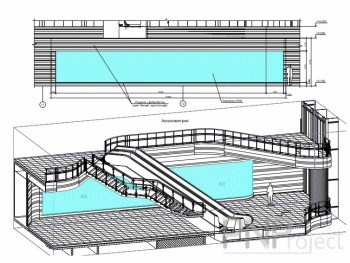
The professional approach of PNProject specialists to the development of the AR section allows optimizing the labor intensity and cost of construction and installation works within the budget, minimizing unforeseen costs, and eliminating the risks of design errors. We base our work on a detailed study of the specifics of the object and in-depth technical knowledge in the field. architectural design. Each action of the designer is clearly consistent with legislative acts, state standards And building codes. We follow the development of the global architectural industry, follow innovative trends, and lay the foundation for the introduction of the latest technologies. The specialists of our company pay equal attention to the reliability and aesthetic characteristics of the building, designing high-quality, functional and simply beautiful buildings.
Statistics show that more than 80% of existing technology parks are within 20 km of a university institution, which is often part of a joint-stock company and owns land. Despite the presence of significant living spaces in technoparks, it is beneficial if a village structure is located nearby, not only because of easy access to labor force, but also because of the public resources provided by public service and recreational facilities of the Technopark can be beneficial. Continuous growth and development is another fundamental principle technological complexes- innovations need to constantly modernize existing buildings and build new ones.
We accept orders for the development of architectural solutions for objects of various purposes of any degree of complexity. To contact our specialist, fill out the feedback form or call us yourself. We are open to a constructive dialogue with the customer, so the result of our work always meets the initial requirements.
Therefore, it is desirable to predict significant expansion in the long term when choosing a location. The project proposal for the Mirovine Technopark provides for its location in the immediate vicinity of the ring road and the Trebić junction. The residential area is a natural extension of the existing residential area, and the public service of the complex is available to the residents of Mivrovyan.
Strategically planned research parks include shared spaces where industry and academia can work side by side. Despite the need for a dynamic organization of the park, we can identify some of the main functional groups with particular care.
The choice of an architectural and artistic solution for a cottage building should be justified by the means of architectural composition (tectonics, ratios and proportions, scale, rhythm, symmetry and asymmetry, chiaroscuro, texture, contrast and nuance, color of materials, etc.). When developing an architectural and artistic solution for the facade of a building, compositional unity should be achieved between the internal space of the building and its external volume. The search for the composition of internal spaces should be carried out simultaneously with the search for the composition of the external volumes of the building.
Initially, a sketch is made, made in several versions (at least 2, 3). The object is depicted in the main masses, but in compliance with the proportions of the building or its fragment. The sketch must clearly reveal the structure of the form and accurately convey the nature of the architectural details, their connection and dependence between themselves and with the whole structure.
At the sketch stage, it is important to make a choice of a vertical or horizontal layout, determine the main focus in the composition, provide a place for inscriptions, signatures, think over and outline the surroundings. Knowing the basic laws of constructing a harmonious composition (visual balance, identifying the center of the composition, the ratio of the main and the secondary, etc.) allows you to correctly analyze possible compositional options by performing test sketches. After the approval of one, the most successful version of the sketch, an architectural and artistic solution for the facade of the building is developed in more detail.
When building a facade, it is necessary to identify the figurative, large-scale, constructive and spatial properties of the designed building, convey its style, character and work out the details. The main tonal composition is determined - the main ratios of the background, light, shadows with the identification of materials (stone, brick).
First of all, it is necessary to achieve the expressiveness of the total volume of the building, using plastic, using various roof configurations.
Then you can move on to smaller details: group and place windows, balconies, bay windows and protruding parts of the building in different ways, introduce racks, columns; highlight different parts of the facade with different textures and surface colors. To identify compositional axes in the form of entrances to the building on the facade, it is necessary to apply the rhythms of repeated elements and group the volumes and details of the building. There should be a large-scale consistency of the height of the floors, windows, doors, balconies, bay windows, decorative elements of the facade. If it is necessary to enlarge the architectural scale, it is possible to combine elements of the facade (balconies, bay windows, etc.) into a single compositional element and highlight it with texture, pattern or color.
After the preparatory work done, you can proceed to the detailed study of the facade. It is necessary to work out in sketches each element of the facade. You can give special expressiveness to the entrance to the cottage by selecting various architectural solutions for cornices, visors, decorative elements of the porches. You can decorate balconies by selecting options for fences with different patterns. Fences can be solid and lattice (see Appendix 2). Changing the shape, pattern of window and door bindings also makes it possible to change the appearance of the building. Giving the bay windows different shapes in plan makes it possible to play with similar variants of the architectural and artistic design of the facades in different ways.
You can give the building a unique look by changing the properties of the materials used for the walls. Show texture, cutting walls into smaller scale elements, cladding, plasticity of wall elements. For greater expressiveness of the elements of the facade, mosaics, reliefs, paintings, etc. can be used.
Using active color solution elements or the entire building as a whole can also change the architecture of the building. When performing the facade, it is necessary to establish the type of building material from which the exterior finish is made. The nature of the material determines the overall tonal relationship of the building and the background or individual parts of the building. Can show natural color building materials(different types of stone, different types of metals, various artificial and synthetic materials) or specially painted surfaces of facade elements. Color changes and harmonizes in accordance with the laws of all elements of the composition (integrity, nuance, contrast, symmetry, rhythm, module, measure, etc.). Color sometimes allows you to correct proportions that are not very successful, when there is no way to change the volumes themselves. Color combinations in the exterior should take into account the psycho-physiological factors of perception.
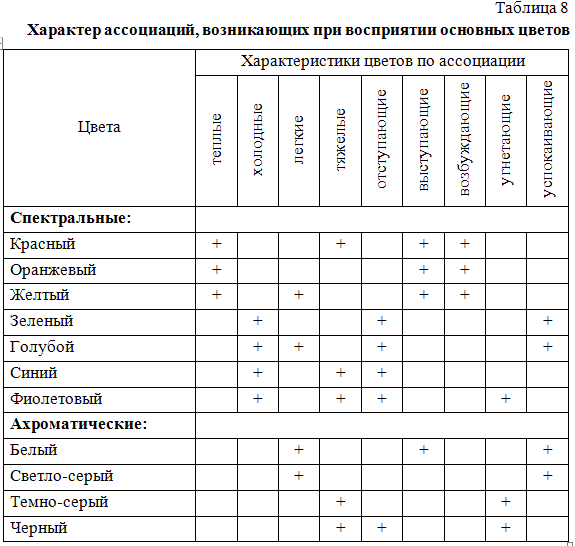
An active architectural tool is the use of texture. Relation by texture - the relationship that occurs when comparing or combining smooth surfaces with surfaces with a strong relief, or polished surfaces with matte or rough.
The development of the architectural and artistic solution of the cottage is being completed by introducing into the drawing elements of the entourage of a landscape or subject nature. The inclusion of the surroundings in the composition of the facade should reveal the scale of the structure. When depicting the entourage, the unity of perception of all elements of the drawing should be maintained. Examples of entourage for the design of facades of residential buildings are presented in Appendix 3
Course work is carried out in pencil on a sheet of A1 format (594 × 841 mm) in compliance with the requirements stipulated by ESKD and SPDS.
Building design starts with development plans, as the plans reveal the functional and compositional connection of the premises, as well as the constructive scheme of the building.
The floor plans show: the coordination axes of the building, the distances between them; marks of sites located at different levels; thickness of walls, partitions and their binding; all openings with dimensions and bindings; the name of the premises and their area.
Plans and sections are made in pencil or ink in accordance with GOST 21.101, GOST 21.501 and STP NNGASU 1-5-98.
Inscriptions and fonts are made in compliance with the requirements of GOST 21.101, GOST 21.501, GOST 2.304 and STP NNGASU 1-5-98.
It is allowed, with the permission of the teacher, to use varieties of fonts.
Requirements for the implementation of drawings of plans:
dimension lines inside and outside the building;
wall bindings;
designations (on a scale) of sanitary appliances and gas or electric stoves;
traces of cuts;
windows, balconies, loggias;
axes marking;
area of premises;
the names of the premises.
When designing a cottage building, you should perform incision.
The following are applied and indicated on the sections: coordination axes and dimensions between them; marks at the floor level of each floor and the bottom of the supporting structures of the coating; ground level mark, mark of the top of walls, cornices, mark of the base of foundations, dimensions and binding of openings, height of floors and thickness of floors.
Requirements for the execution of drawings of cuts:
· two dimensional lines;
· marking axes;
dimensions inside and outside the building;
flags of the composition of floors and roofs.
Simultaneously with the development of plans and sections, they design facades.
The facade is made using the technique of light and shade shading (washing) of architectural drawings using diluted ink or watercolor. Other techniques can be used: painting with watercolors, shading, gouache coating, appliqué, splashing, trimming, etc.
Start the final design by placing the projections on the sheet, choosing the appropriate scales.
In accordance with the approved sketch, they begin to draw a clean drawing in pencil.
The execution of the drawing is recommended to be carried out in the following sequence: very thin, barely noticeable, but clear lines without pressure are applied to the main dimensions of the object, inscriptions, and the main elements of the entourage. After checking and making sure that the location is correct, the details and font are drawn.
. In the drawing, according to the rules of descriptive geometry, own and falling shadows are built. To build shadows on the drawing of the facade, you must also have a plan or side facade, made in the same scale.
The diagonal of the cube is taken as the direction of the light beam, this direction is most beneficial for revealing the shape and makes it easy to build shadows. The construction of shadows on the drawings of building facades is based on determining the points of intersection of light rays with vertical planes of facades or inclined roof planes. (For more details on building shadows, see).
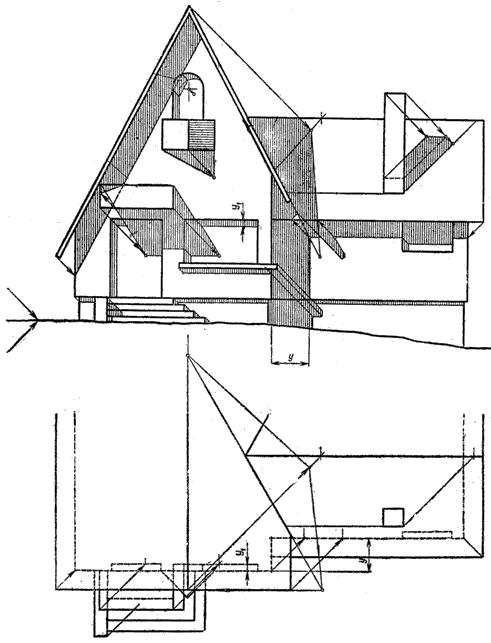
Rice. 25. Building shadows on the facade of a schematic building.
Shadows are not outlined, remain drawn in pencil. The falling shadows on the parts protruding forward are darker, and on the middle part of the facade receding back, they are lighter. On the protruding parts of the facade, the contrast between dark and light (shadow and illuminated plane) turns out to be sharper, and on the distant parts of the facade, it is weaker, softer.
The last, final stage of the drawing - laundering, with the help of which the following are created and revealed: artistic plasticity of the architectural form, compositional structure, relief, color, texture of the depicted object. To convey the nature of the architecture of the structure, its volumetric-spatial structure and the implementation of the compositional concept, an appropriate method and nature of hillshade is used. The drawing can be made in two versions: in a rich, intense range, in a very contrasting manner and light airy.
Shadows should be built and applied on the facade. To better identify the volumetric and spatial nature of an architectural object (facade), you can use the entourage, which must be consistent in scale and nature with the design object.
Cleaning solution prepared by adding a drop of carcass to (boiled) water. The solution should have such a transparency that would allow reading the text through the thickness of the glass filled with the solution. The solution must be filtered through gauze and stored in a closed glass vessel. The solution is considered suitable for washing if the ink does not precipitate, does not leave a film on the surface and has no smell.
. Best Paper for washing - Goznak. It is necessary to maintain the whiteness, freshness of the paper, avoid oil stains, destruction of the paper surface from erasing with an eraser, work with ink liner, and also avoid touching the wet surface of the paper with your palms. Otherwise, the paper will be shaggy, the strength of its outer layer will be violated.
Brushes. For washing, round squirrel brushes of various sizes are needed: large No. 12 - 14 about 1 cm thick (for covering large planes, general plans) and small No. 3 - 5 (for drawing small details, textures). The suitability of the brush for work is checked as follows: when taken out of the water, a wet brush should have a sharp end.
The main rule of hillshade concerns its sequence: from space to plane, from general to details.
Before washing, the paper should be rinsed with water and allowed to dry. After that, the paint lays down better. It is necessary to learn how to evenly cover the surface of the paper with a solution of paint or ink.
Washing in the first stage of work begins with the separation of illuminated surfaces from unlit ones; the shadows are covered with an even light solution several times. By the end of the work, to get dark tones in deep shadows, you can go to a darker ink solution.
To get smooth changes in tone, the boundaries of light and own shadows on round or cylindrical surfaces must be blurred with water with each layer of ink.
Light surfaces are darker in the background, lighter in the near ones.
Falling shadows are darker than their own.
An important element hillshade is an indication of the material, in particular, if the part is made of a light material, then its illuminated part should be lighter than the tone of the sky, and the shadow should be darker. If the part is made of a dark material (brick, granite, etc.), then the surface illuminated by the sun will be darker than the sky and less contrast than in the first case.
After the introduction of the texture, a significant increase in the intensity of all shadows is usually required.
When pictured brickwork it is necessary to draw the texture of the bricks and the pattern of the masonry itself.
Multi-color painting of the facade.
First, the entire surface of the paper to be painted is moistened with water, after which all structures, the ground and the surrounding vegetation are covered with a weak solution of light yellow paint with an orange tint. The sky, with the exception of the clouds, is painted in a blue-gray tone, and the earth in a green-brown tone. Then the main colors of the surface of the structure itself are transmitted. In a gray-blue tone, taking into account the color of the surface, own and falling shadows are applied with a gradual lightening or blurring of the tone. At the same time, the falling shadows are darker and colder than their own.
Requirements for the execution of drawings of facades:
architectural surroundings or axes and marks of the building;
color hillshade with shadows.
General plan is carried out in compliance with the requirements of GOST 21.508 and GOST 21.204, in which the plan for the breakdown of buildings and structures is combined with the plan for landscaping and landscaping the territory.
Execution Requirements master plan:
sign north-south;
dimensional lines;
selection of the designed building;
·Explication of buildings and structures;
·washing of the master plan in the range of the completed facade of the cottage.
Coursework must be completed with a sufficient level of graphics.
Bibliography
1.SNiP 31-02-2001. Residential single-family houses.
2.SNiP 2.08.01-89. Residential buildings.
3.Architecture of civil and industrial buildings: Civil buildings: Proc. for universities / A.V. Zakharov, T. G. Maklakova, A. S. Ilyashev and others; Under total ed. A.V. Zakharov. – M.: Stroyizdat, 1993. – 509 p.: ill.
4.Architecture of civil and industrial buildings: Proc. for universities. V. 3. Residential buildings / L. B. Velikovsky, A. S. Ilyashev, T. G. Maklakova and others; Under total ed. K. K. Shevtsova. - 2nd ed., revised. And extra. - M.: Stroyizdat, 1983. - 239 p.: ill.



